If you’re looking for a form builder to create surveys, questionnaires, quizzes, and polls, then you’ve likely considered using Google Forms. There are plenty of reasons why users flock to this form builder — but that doesn’t mean it’s going to be right for everyone.
In this article, we break down the pros and cons of Google Forms and hear from people who have experience using it in different settings. Plus, we explore a popular Google Forms alternative, Jotform, and help you determine whether it’s the right form builder for your needs.
The pros of Google Forms
Why should you consider using Google Forms to build your surveys, questionnaires, quizzes, and polls? There are many reasons why it stands out as a leader in the marketplace.
Ease of use
With a highly intuitive user interface, Google Forms is easy to learn how to use. Google Forms makes it easy for anyone with basic tech skills to whip up a form in minutes, says Naomi Clarke, chief diversity officer at Flingster, a chat platform. “Its simplicity makes it the favorite choice of many,” she says, “and this simple design comes with an unparalleled benefit that there are no entry barriers for technology-savvy users.”
Cost-effective
Google Forms doesn’t cost anything — as long as you sign up for a Google account. “Google Forms is free, making it perfect for small businesses with limited budgets,” says Rhealyn Mugri, founder of The Digital Projects, an SEO agency for small businesses. “When working with local entrepreneurs, the no-cost aspect means more resources can be funneled into other areas, like marketing automation or SEO services. This allows comprehensive campaigns without financial strain.”
Customization options
Google Forms allows you to customize a form by adjusting the color scheme, structure, and content. The customization options aren’t extensive, but for many users, they’re enough to get by. “The basics cover what our small team requires,” says Michael Dinich, financial advisor and founder of Wealth of Geeks, a personal finance website.
“Google Forms can be adapted in unique situations where organizations design their custom forms to meet specific requirements,” adds Clarke. “You also have control over question types, can add conditional logic that changes the form based on answers, and can style it with images and branding. This level of customization makes Google Forms versatile, and it can be used in anything from a simple poll to an intricate survey with multiple pathways.”
Integration with Google Workspace
If your organization uses Google Workspace, then you’re in luck — Google Forms seamlessly integrates with the entire Google ecosystem. It was also specifically developed as a companion app for Google Sheets.
“Google Form responses can be automatically written to a Google Sheet so you can process them and share the results with others without copying data around manually,” says Clarke. “It can make everything more efficient, because you’re able to go through processes faster and add things on the fly when time is of the essence.”
Easy sharing
Once you’ve created your form, sharing it with others is simple. You have the option to email the form, share it with a link, embed the form on a website, or share it through social media. Plus, your form respondents can use Google Forms on desktops, laptops, tablets, and mobile phones. “Google Forms is easily accessible on any device with internet connectivity,” says Mugri.
Unlimited submissions
There is no specific limit on the number of forms or submissions you can have with Google Forms. The only limit is a cap of 5 million cells in the corresponding Google Sheet of a form’s responses.
“With Google Forms, we can create an unlimited number of forms and collect unlimited responses,” says Cameron Lee, CEO of ACCURL, a machine manufacturer. “This feature is particularly beneficial for a large organization like ACCURL, where we need to handle multiple surveys and forms simultaneously. It allows us to gather extensive data from employees, clients, and partners without worrying about additional costs or limitations.”
The cons of Google Forms
While Google Forms has its merits, it’s not the best choice for everyone or every use case. Below, we explore some disadvantages of Google Forms.
Limited design options
While Google Forms does have some customization options, its menu doesn’t stack up to the wide variety of options offered by other form builders.
“Google Forms only offers basic design features, which can make the forms look generic and less aligned with our brand identity,” says Lee. “Advanced customization is crucial for us to maintain a professional and cohesive appearance across all our communications, and the lack of these options means we sometimes need to look for alternative form builders that offer more sophisticated design capabilities.”
Google account requirement
In order to create a form, questionnaire, survey, quiz, or poll, you must sign up for a Google account. However, the good news is that your form respondents don’t need a Google account in order to fill out your form.
Lack of robust analytics tools
If you’re looking for a way to analyze the data you collect within Google Forms, you only have a few basic options. “Google doesn’t offer any advanced analytics or reporting features natively inside of their form solution,” says Clarke.
“Google Forms can export data into Google Sheets to analyze further but lacks in-depth native reporting and visualization features,” Clarke adds. “This, therefore, usually requires the use of other tools because in essence there is no capability of analyzing the complete set of results generated. This can make it a bit difficult or annoying to work with and hence increases time to insights.”
Security and privacy concerns
If you deal with highly sensitive and secure information through your forms that you need to keep private, you’ll want to explore the specific security and privacy features of Google Forms. While the Google ecosystem is secure overall, there have been instances of Google Forms being used in phishing scams.
Lack of advanced conditional logic
Google Forms offers basic conditional logic that allows you to send respondents to different form sections depending on their responses to questions. However, it does not offer conditional logic to show or hide specific questions according to previous responses or other more granular controls at the question level.
Requires an internet connection
If you or your form respondents want to use Google Forms, you’ll need an internet connection. “Google Forms requires reliable internet access, which can be a setback in field operations,” says Mugri.
“I encountered issues during local SEO projects in remote locations with unstable connectivity, causing delays in submitting forms,” she says. “The lack of offline functionality can hinder workflow continuity in such scenarios.”
File upload restrictions
Form respondents can upload files to Google Forms for free, which is a plus, but there are some restrictions to be aware of. “The file upload feature requires users to have a Google account to upload files,” says Lee.
“This can be a barrier for external applicants or respondents who do not have a Google account,” he says. “The file size limitations can be restrictive, especially when we need to collect large files, such as detailed project proposals or technical documents from candidates and partners.”
Jotform: An alternative to Google Forms
After exploring the pros and cons of Google Forms, you may be wondering whether there’s a Google Forms alternative that stacks up. Jotform is a form builder that has all of the advantages of Google Forms — and more — without the same disadvantages. Take a look:
- Advanced customization options: Jotform comes with thousands of templates you can use as the foundation of your form, survey, questionnaire, quiz, or poll — or you can create your own design from scratch. Jotform allows CSS styling for users who want to achieve specific design goals, such as matching their company branding.
- Advanced form features: Jotform’s widgets, e-signature functionality, conditional logic at the question level, file uploads, advanced form fields, and so much more help you do more with your forms. Plus, you can pre-populate forms, build responsive forms, and complete other advanced tasks.
- Third-party integrations: Like Google Forms, Jotform integrates with Google applications like Google Sheets and Google Drive. But it also has integrations with 240-plus other third-party apps, including payment processors like PayPal, customer relationship management (CRM) tools like Salesforce, and productivity tools like Slack.
- Advanced analytics functionality: With Jotform, you have access to Jotform Report Builder, which lets you build your own custom visual reports to analyze and present your form data.
- Enterprise-level security options: Like Google Forms, Jotform complies with GDPR and other privacy regulations for enhanced form security. Jotform is also PCI-DSS Level 1-certified for secure payment collection and offers features for HIPAA compliance to safeguard protected health information (PHI).
Another good reason to try Jotform: It has a 4.7 out of 5 rating on G2 and is on G2’s list of top software companies for 2024. If you’ve already got forms within Google Forms, you can easily import them into Jotform and get going on your next form today.
Photo by Good Faces on Unsplash



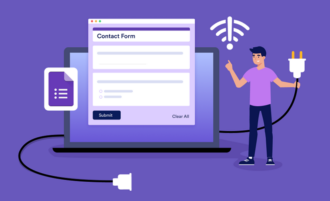

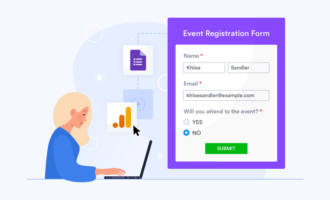
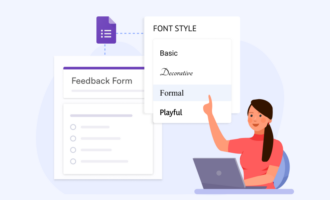
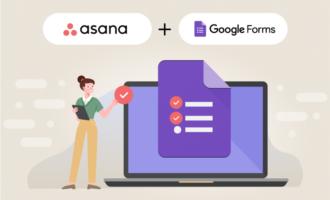













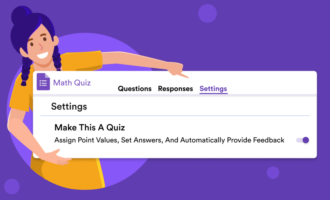



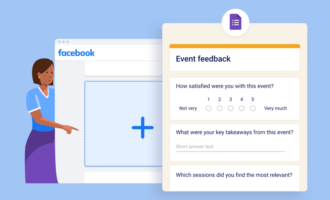
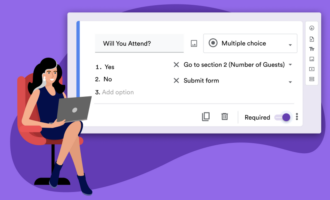
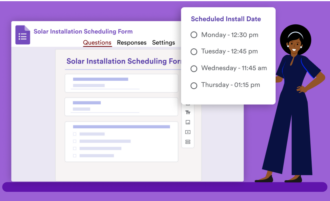






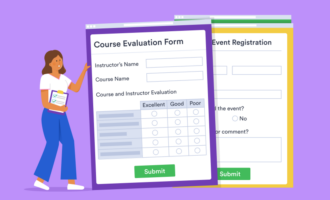

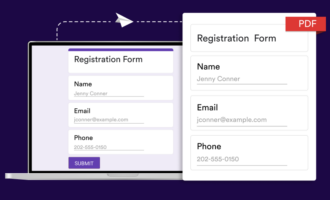


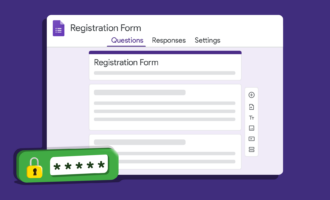







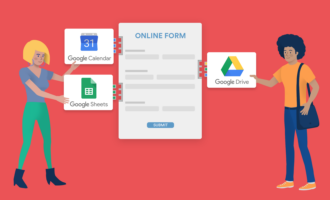
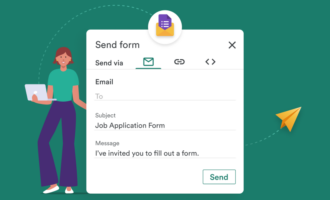










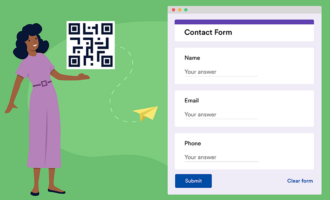

















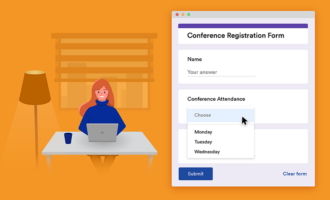


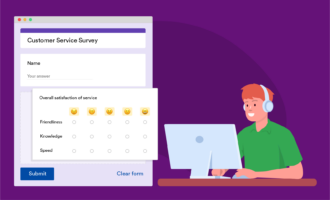






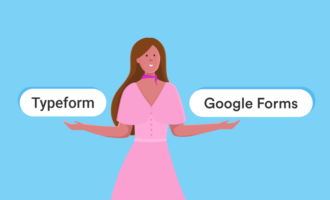
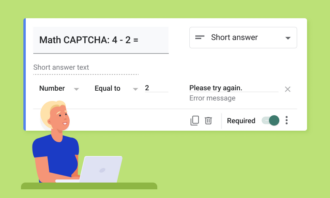






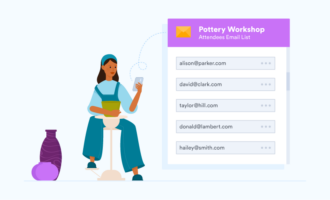





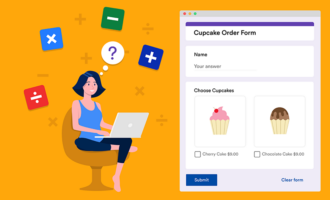
Send Comment: